How to become a YouTuber.
Learn what it takes to become a successful YouTuber with pro tips to help you monetize your channel and build a strong subscriber base.
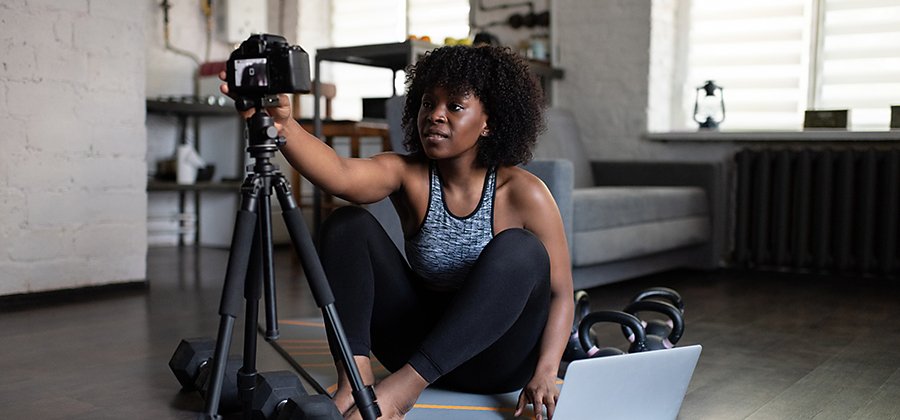
So you want to be a YouTube star.
YouTube is one of most popular platforms for aspiring content creators. It boasts worldwide audiences, advanced analytics tools, and is a home for even the most niche of topics. Maybe you have a few YouTube videos you want to expand on, or maybe you’re ready to take your fledgling channel to the next level.
No matter where you start from, if you want to build an audience for a channel that generates revenue, you’ll need more than quality content. But it’s not rocket science either; with hard work, some YouTube know-how, and a little bit of marketing savvy, you can turn your content creation side hustle into a full-blown operation.
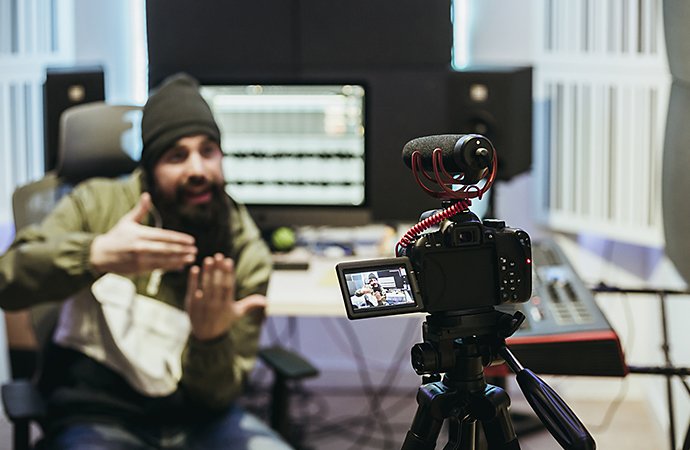
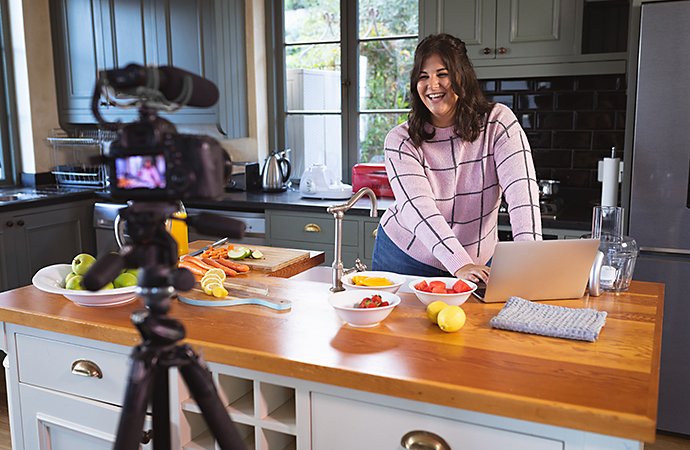
Channel your passions into a YouTube channel.
The first thing you need to establish when you create your own YouTube channel is what type of content you’ll make. You might have a lot of interests, but your channel should be laser-focused on one topic. It’s important to set this expectation early so your audience knows what you’re all about and if your channel is for them.
Whether it’s makeup tutorials, daily vlogs, video game reviews, or how-to videos, “there’s a niche for everybody,” says Brad Rodriguez, founder of the popular DIY channel Fix This Build That. “It doesn’t matter what it is, but you yourself have to know what it is,” says Rodriguez.
Some video content creators, like those who do vlogging, might make content that varies from day to day, but the unifying factor is still the personality of the vlogger and their lifestyle.

Know your audience.
This goes hand in hand with knowing the type of videos you’ll make. “You have to know who you’re making videos for,” says Rodriguez. Your channel won’t appeal to everybody, and that’s okay. It’s better to build a strong base of 100 fans than 1,000 casual subscribers who aren’t engaged.
Find your target audience, put yourself in their shoes, and ask what they want to see. When you pick a topic you’re passionate about, what you want to make and what the audience wants to see will probably align more often than not.
This doesn’t mean you’re locked into one specialty. Your channel can grow and evolve as you do. And if you’re listening to your audience, it probably will. “The nice thing is that you’ll start getting feedback from your audience, and then you can branch out from there,” explains Rodriguez.
Mind your SEO.
Search engine optimization (SEO) is the key to getting your videos in front of the most people. “YouTube’s entire goal is to keep you on the platform as long as possible,” says Rodriguez. YouTube uses an algorithm to rank content and maximize viewership across the platform.
Your goal as a content creator is to boost your standing with the algorithm. But there’s no one way to “beat” the algorithm. Simply put, the algorithm prioritizes the content that gets clicked on the most, watched, and watched the longest. You’ll need to turn to metrics to indicate how well your content is performing, but engaging content is the biggest key to success.
Three metrics to keep your eye on.
According to Rodriguez, the big three metrics to watch are click-through rate, average view percentage (retention), and total watch time.
1. Click-through rate is the percentage of people that watch your video after seeing your thumbnail image. So if 1,000 people see your video in their search results and 100 of them click on it, you’d have a click-through rate of 10%.
2. Retention rate is the average percentage of your video that gets watched by viewers. “If you can get a 50% retention rate, that’s a good benchmark to start at,” says Rodriguez.
3. Total watch time indicates which content viewers actually watch, as opposed to clicking and abandoning.
Watch your openings and your endings.
One way to boost your SEO is to get straight to the meat of your message. Don’t waste your first minute with a lengthy introduction. Once you kick off your video, keep the value all the way to the end. Don’t end the main portion of your video with three minutes to spare and spend those minutes wrapping up. If you do this, many people will drop out, lowering your retention rate and total watch time.
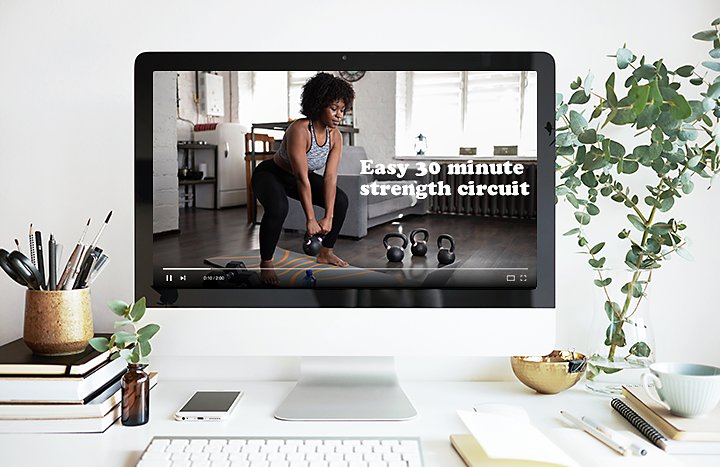
Start off strong with a solid title.
“The algorithm has gotten so smart that you don’t have to keyword stuff,” says Rodriguez. Since YouTube automatically analyzes your video’s content frame by frame, it’s more important to make an interesting title rather than a searchable one.
No one likes a clickbait title, so be specific about what’s in the video, but spice it up without worrying about a negative impact to your SEO. “You want to open a question mark in their mind that will be filled by clicking on your video,” says Rodriguez.
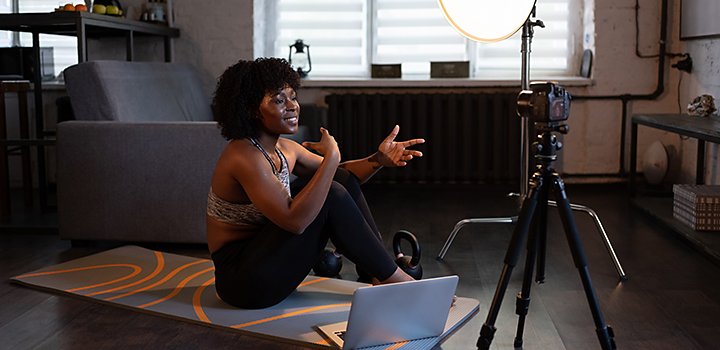
How to turn your channel into a money maker.
Once your channel is up and running, it’s time to think about sponsorships and the monetization of your channel. If your goal is to make YouTube a full-time gig, this is essential. If not, you should still be prepared for brands to approach you. “If you don’t have a plan and then it happens, you’ll react in the moment and might commit to something you don’t want,” says Rodriguez. “So know in advance, because companies will approach you.”
Be selective with your sponsors.
Be comfortable saying no. “Do not feel obligated to take just anything,” says Rodriguez. “If you say yes to everything, you’ll compromise the integrity of your channel.” Your reputation as a trustworthy figure is vital to your success as an influencer.
Your audience will know if you’re being insincere, so ask yourself if you believe in the product or company you’re being courted by, and then decide if you’ll partner with them. “That’s the line in the sand for me: Would I have bought this on my own?” says Rodriguez.
Agree to the terms in advance.
Typically brands will offer a free product in exchange for a review, but never assume you’re on the same page about what that entails. Some brands may only want you to wear their t-shirt during a video, while others may expect a full video dedicated to the product. “Everything is negotiable,” advises Rodriguez. Some companies may prescribe a strict creative direction for your sponsored content. In those situations, don’t forget that you can push back.
"I tell companies that I know how to talk to my audience best and explain that if I read a script, I'm not going to connect with them. But if I talk about how this has helped me and how I’ve used the product, in my own words, it’ll be much more authentic,” says Rodriguez. Remember that brand marketers want a win just as much as you do, so frame your discussions like you’re on the same team.
Stay out of sticky legal situations.
Sponsorships are not the time to skim contracts and sign them without a second glance. A couple things to look out for are content ownership and FTC compliance. Some brands will add a clause giving them copyrights and ownership of your content, which means they can make you take the video down or redistribute it without further compensation.
You can read up on the FTC’s endorsement guidelines here, but the main point is to be honest and not misleading about your endorsements. If content is sponsored, make sure you disclose that in your video.

How to grow your following and revenue.
Expand to other social media platforms.
TikTok, Instagram, Facebook, and Twitter are all large social networks with new audiences just waiting to be reached. For maximum exposure, branch out and use your YouTube community to kick off another following on a new platform. This will let you engage with your followers on a deeper level and keep you in the loop on trending topics.
Diversify your revenue streams.
Ad revenue and sponsorships on YouTube are just the start. Sources like Patreon and sales of merchandise and products can also bolster your income as a YouTuber. If you have a photography channel, launch a preset pack. If you have a fitness channel, make a workout plan PDF and start making passive income. If you have other social platforms, you can also make ad revenue on other platforms like Facebook, Instagram, TikTok, and Twitter.
“All these things are like setting buckets out in the rain to collect water,” says Rodriguez. “If you look at any one bucket, it’s not a lot of water. But if you pour all the buckets together, everything starts to add up.”
More tips to start your YouTube channel strong.
Start off with a base of content.
If you can, create a series of videos to launch your channel. Your first video might be rock solid, but people are unlikely to subscribe to a channel with just one video. If you have five more videos to explore after that, curious viewers can get to know you and will be more likely to subscribe.
Once you start the gears turning, it’s up to you to keep them in motion. Make a content schedule and stick with it to earn steady gains on your channel. “Getting that consistency will help viewers return,” says Rodriguez. “That’s the biggest challenge: there are so many channels out there. People follow hundreds of different YouTube creators, so they may not see yours.”
Whether you upload new videos every Wednesday or put out new content every day at 3pm, set an expectation with your audience early on, so they know exactly when and where to find you.
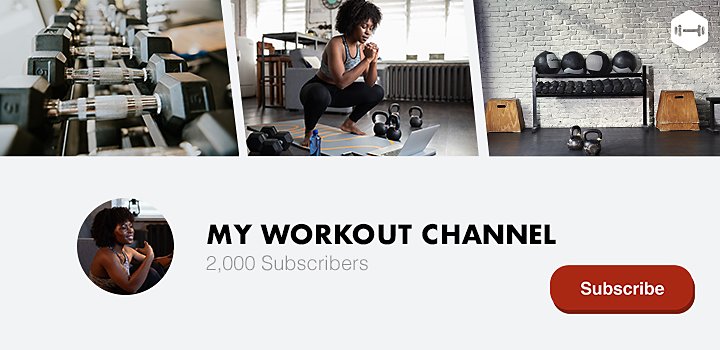
Brand your channel.
Don’t overlook the basics when it comes to building out your channel homepage. Create a custom banner and logo or profile picture, and be sure to fill out the name and description of your channel with your upload schedule.
High-quality content is key.
Production value speaks volumes when it comes to great content. Use a DSLR camera instead of your computer’s webcam for the best video quality, and invest in audio and lighting setups. You don’t have to spend thousands of dollars to start out; even mobile phone cameras can film 4K video now, and decent microphones and lighting kits often cost much less than you might think.
When it’s time to edit, pick a video editing software that can pull all your clips into a polished product. Adobe Premiere Pro is a great option that both film industry professionals and hobbyists alike use. Transitions, titles, special effects, audio, and more are all post-production touches that help keep your audience engaged from the first glance to the final frame.
A lot goes into being a YouTuber, but don’t be discouraged if you don’t see overnight success. With patience and persistence, your hard work will start to pay off. YouTube is a great place to meet like-minded people and dig deeper into a hobby you love, so remember it’s important to enjoy the ride and let your passion for your topic shine through to your viewers.
Contributor
Do more with Adobe Premiere Pro.
Make visually stunning videos virtually anywhere — for film, TV and web.
You might also be interested in…
Make Instagram Story templates in Adobe Premiere Rush.
Adjust aspect ratio and add fun edits to create seamless videos perfect for Instagram Stories.
Introduction to video editing.
Learn the principles of video editing and practical tips for both big and small screens.
Educate and inform with explainer videos.
Find out what goes into a good explainer video and how to effectively educate your audience.
Learn the basics to help you break into this popular audio medium.
Get Adobe Premiere Pro
Create flawless productions with the industry-leading video editing software.
Free trial, then incl. GST



